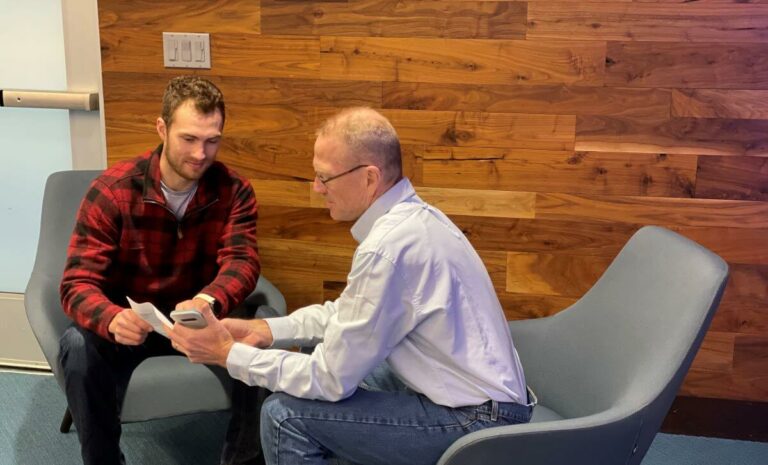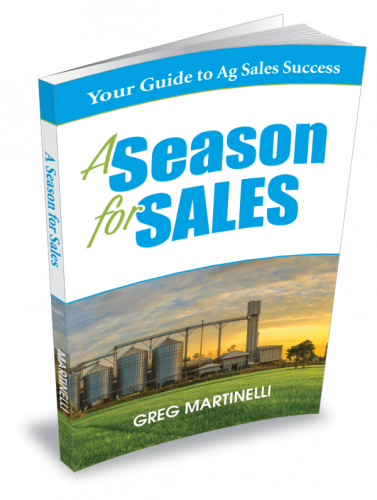2022 Focus Area
Focus Area #2 – Shift your Sales Approach
Today, we cover part two in our three-part series. Thinking about the difficulties of selling in agribusiness, I reflected back on my past experience as a salesperson, sales leader and training salespeople. I came up with three areas that I want to focus on in the beginning of this year. These focus areas are critical for you to get out of the “business as usual” sales approach and differentiate yourself in the market. Your customers are looking for you to bring them new and better solutions. Here are three ways to do that.
For Focus area #1, you can read at: Bring all your resources to the Sale or you can listen to the Podcast at: Ag Sales Podcasts Please go back and review how to bring more resources to the sale than your competition. Make your support team part of your strength.
Focus area #2 is the method of shifting who you are in your market.
In sales training, we are taught the steps of the sale:
- shake hands,
- make small talk,
- find a need,
- present on your products as a solution to that need
- ask for the order
- follow up by doing it all over again
That’s a great model if followed. Here’s the problem. Few salespeople follow it. They are really good at shaking hands and small talk, but do a poor job of finding a need. So, they skip that step. Or, they assume every producer has a need for their products. “They plant corn and beans. So, they must need my product.”
First, your customers don’t care about you, your products, nor all the technical research on your products and not even the ROI you are promising to save them. Why? Because they hear that all day long from every salesperson that drives down their driveway.
You figure out really quick, that the farmer or Ag buyer has many options to choose from to solve their problems. To sell them anything, you can either price out, wait out, or stand out. Those are your choices.
You can price out of this challenge by bringing such a good financial deal that the producer can’t refuse. However, that’s not a great solution and often not your choice as a salesperson, but it’s obviously used in your market. There is always one competitor willing to drop prices and create a storm in the market. Chasing this is a great way to erode your margin and bankrupt your company if used too much.
Next, you can wait it out. This is the option I see most salespeople take. They were hit with an objection, usually price. They called their sales manager to see if they could price match or even beat the price. Without being able to drop prices, the salesperson has to go back and see if they can get any business at their higher price. The customer says no, maybe next time and now the salesperson has to wait. Hoping that something goes wrong with the competitor’s deal, the salesperson may have to wait a full year to go back, especially in agronomy purchases or long-term contracting sales. Our salesperson-in-waiting may go back during peak demand season like planting or an industry shortage to see if the customer needs more product than they ordered from the low-price competitor. They may go back at harvest or when livestock are sold to see if the low-cost product yielded what they promised.
Otherwise, our salesperson has to wait until the next year’s purchases are being decided. Going back any sooner will feel pushy-salesy. And no self-respecting salesperson wants to be salesy.
I want to offer a third way. A better way. I call it the Trusted Advisor Method. It takes a little longer to get there but has much better results for your efforts. It starts with the first word – Trust. Developing trust takes time and effort. Since you can’t do a lot about time, except stay in your territory and sell for many years, let’s talk about efforts to establish trust.
As a salesperson, the first step in establishing trust is genuine interest in your customer’s business and livelihood. I don’t know any other way to express that interest than developing the skill to ask great questions.
Let’s go back to our sales model
- Shake hands and make small talk: Many salespeople feel this is the part where you show interest. It is sort of.
In the early phase of the relationship, too much time on small talk is a sign that you are avoiding the sales discussion or trying too hard to be their friend. They have friends. They don’t need any more. Right now, they are busy at work and need to focus on their business.
Besides, there is a mental timer going off in their head the minute they meet you. It might be set on about 15 minutes for a salesperson they don’t know. It might be five minutes. Don’t waste your prime time on over doing the small talk.
Recently, on a farm call, the salesperson I was coaching did this very thing. First call of the day. We got out of his truck, greeted the prospect, and started discussing local connections that the salesperson and the producer might have in common. All good so far. After a couple failed connections, they found someone in common that they knew. Then, we spent the next 10-15 minutes talking all about the personal life of that common connection. There was visible body language from the prospect that told us he was getting tired of the discussion. Ignoring it, the salesperson went on with the small talk.
The producer finally said he needed to go and asked, “What do you have for me today?”. As the salesperson began telling the prospect about the fertilizer and seed booking, the producer looked quickly through the handouts. Then said, “I’ll take a look at it. I have another appointment I need to get to. Appreciate you coming out. I think I’m all good for this year. I’ll let you know if I need anything.”
The salesperson was stuck. He had nowhere to go. He had no way to get back on the farm. He had no new information from the sales call to ask for a second appointment. With nothing else to offer, the salesperson said, “Sounds good. Let me know if you change your mind.”
In this scenario, presenting blindly on his products seemed to be the only logical step. It’s prime time for booking seed and fertilizer. The salesperson has a lot of customers to get to. The producer needs to make a decision soon to get in on the early order discounts. Why not present on your products and see if you can get him to buy? The answer is because your sales call will turn out just like it did for this salesperson.
The real sales process starts when you shift the discussion into a set of well-developed questions. Fight the urge to present on your products with every ounce of energy. Make every attempt to get into their buying process. Remember, nobody wants to be in your selling process or your funnel. Said another way, nobody wants to be sold, but everyone wants to buy.
Listen into the podcast version for more explanation on the steps and benefits listed below.
7 Components of becoming a Trusted Advisor
- Leadership
- Teamwork
- Communication
- Problem Solving
- Work Ethic
- Flexibility
- Interpersonal Skills
7 Benefits from using the Trusted Advisor selling approach to your career
- Faster selling process (you may make more sales on the phone than needing to stand in front of every customer for an order)
- Less price resistance (I didn’t say no price resistance)
- Less customer turnover
- More referrals
- More share of the customer’s spending on your product line (share of wallet)
- More impact in your customers business and livelihood
- More rewarding career
Related articles:
To understand some of the critical skills in becoming a trusted advisor
To understand your value in dollars, time, or emotion
To help those people in your company understand that everything we do is designed to sell. Which means everyone is in sales.



